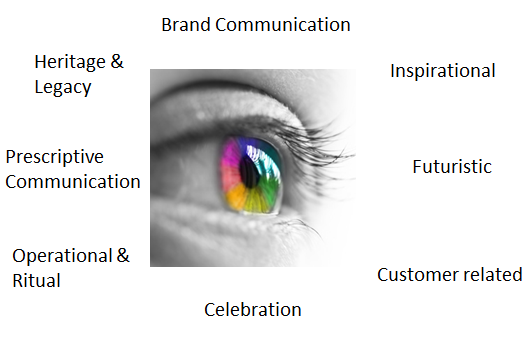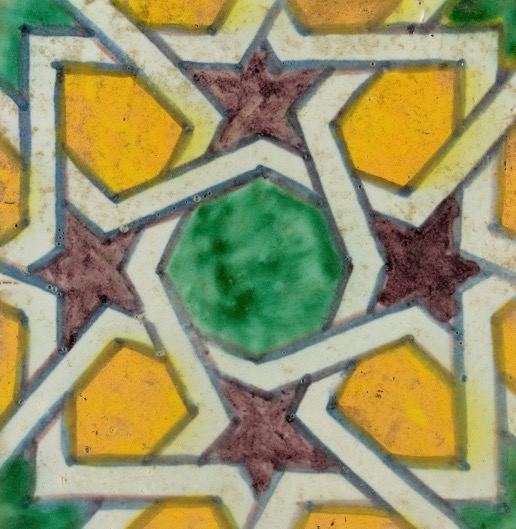“We are following Agile practices because our teams do daily stand-ups. Our teams are working in Sprints and we are very strict about Sprint and Increment planning. So what more should we be doing?”. Sounds familiar? These are some typical responses from managers and leaders when we ask them about their Agile transformation. The Agile coaching community keeps lamenting “people don’t get it, they are doing Agile but they are not being Agile, we do not see a changed mindset”.
Any organizational transformation should be able to make a positive impact across the breadth and depth of the organization including leadership, managers and people. This means the mindset of majority of people, the way most of the things are done; an all-pervasive culture and that would truly mean the organization has transformed. Agile or Digital Transformations also fall in this category. Pervasive culture would mean that the organizational values have permeated through the ranks and file of the unit and has become ‘the normal way of doing things here’. But, how do we know whether culture is pervasive?
What is Organizational Culture?
Culture by definition is a set of shared beliefs and values of a group. They define a set of explicit (stated) and implicit (unstated) principles, expectations and practices. These in turn become manifested as behaviors and actions be it in doing things, or getting things done. They also manifest while making decisions or managing performance or dealing with customers and employees or even executing stated organizational processes. It is a broad definition which can be applied to any organizational setting. Though Culture is a very often heard word in organizations, it is still very much a nebulous concept that is difficult to communicate consistently across the company. The manifestations can be myriad.
In our own experiences of transformation, we often tell our clients that for culture to set in, it takes time. This is something that leadership and management can accelerate by intentionally working upon and not leaving to chance.
Facets of Culture
First, I will briefly explore culture in a society and then come back to see how it relates to the organizational culture. Societal Culture includes many facets. Some of these facets are language(s) people speak or family structure and social practices they follow. It includes dress and clothing, food habits and cuisine. The other facets would include history and heritage, rituals & practices, festivals and celebrations. Yet other facets of culture would be the different art forms like literature, music, dance, painting, architecture, media and entertainment, past-times to mention a few.
The societal culture can be very complex to explain but a person growing up in the society absorbs thousands of cultural nuances at different points in time and get assimilated. Examples of getting immersed in a culture could be way the language is spoken in different contexts, respect to elders in a family. Another example could be the way festivals are celebrated and significance of them, activities happening during these festivals. With this one understands one’s own culture and becomes part of the culture. It is important to note that much of this happens just by being there and with little explanations and prompts from parents, teachers, elders, friends or neighbors!
Also, in a society, many people take it upon themselves to document, promote and spread awareness of ideas and interpretations of a culture. These are typically through creative art forms.
When an individual comes into a “new” cultural context, one has to “understand” that culture to assimilate the same and get comfortable. This can happen by more immersion with native people, maybe learning the language, being more inquisitive than normal, active social engagements, active participation in the society.
Manifestations of Culture
Now, let us look at the Organizational Culture and similarities with societal culture. Within an organization context, the facets of culture could be some of the following:
- How customer centricity is achieved?
- Meaning of Innovation
- How people are looked after?
- Managing performance
- Attitude towards Quality
- Practices and Processes
The list is not exhaustive, of course. But how do all these facets get manifested in different ways?
I would like to recall a couple of conversations in the last few weeks. I was talking to a former colleague and heard from him about celebrations in his company; it was called the ‘innovation day’ where many teams showcased their innovative ideas and projects to the management. It was a full-day event with lots of activities. Likewise, another friend of mine mentioned about ‘wellness day’ celebrated in her office. She explained that on that day, there were professionals who gave some talks about mental and physical well-being, there were some zoom based yoga training and so on.
Another friend of mine had just completed his annual off-site meeting which went virtual this time. He was lamenting on how stressful it was to participate in a 2-day event completely online and missing all the informal interactions and not to mention the fun and frolic of dinners and evening events.
It is quite common to see certain days being designated in many companies around a specific theme. In some cases, these days could be linked to some global or national days like Women’s day or Quality Week or some very company specific days like Founders’ day or Excellence Week and so on.
Day to Day Practices, Ceremonies & Events
The types of activities and how employees participate and come together on these days, nature of celebrations, would vary from company to company. Many companies publish specific events on their calendar. There is a whole set of activities planned well in advance up to the day of the event. The activities could range from presentations to product demonstrations. Employee contests and rewards & recognitions are common. Many organizations make use of these as opportunities for senior management interactions. It is prevalent now to see employees themselves sharing their own messages on internal platforms and even external ones like LinkedIn.
These are indeed manifestations of the culture. I broadly put them under practices, rituals, ceremonies and celebrations. However, I argue that it should not only be what one can see on special days or events like the ones mentioned before. One must look for manifestations even in day to day events, routines, practices and rituals. These are more reflective of the prevailing culture than on special events or days.
In a typical organizational context, it is not enough only for people staying with the company for long to be aware of the company culture. For new team members are joining a company, there have to be easy ways to absorb and imbibe important aspects of the prevailing culture. It is incumbent upon the leadership and management to support, participate and promote in the right way. This is vital for the culture to sustain, thrive and grow over a period of time.
The stronger and more powerful facets of the organization culture have to be constantly ‘seen’, ‘felt’, ‘experienced’ and ‘lived’ by individuals in a company through variety of these manifestations.
I term the outward manifestations as Visual Elements of a culture and I delve deeper into this aspect.
Lean Agile work spaces & Visual Elements
A very popular notion of Lean Agile Workspaces is about creating productive spaces, ensuring no barriers to communication among team members and stimulate openness and transparency. In many companies there are small clusters that are created amidst the clutter of cubicles to give teams opportunities to huddle and discuss project related topics. White boards and status charts boldly visible are good signs of Lean Agile thinking.
Many visual elements are easy to spot by just walking around a workplace. Starting with the most obvious: Work Cubicles, Cabins and Meeting rooms. Good opportunities for culture manifestation are through pictures, what gets displayed on TV screens, display monitors, notice boards, wall adornments etc.
The Visual elements between meeting rooms and cubicles can be very different. Most common visual elements are statements on company vision, mission and values. In many cases, there can be boards on quality policy or display of various quality certifications. In many other organizations, display of company’s products and brands. Many companies display the industry awards that they have won.
Possible categories of Visual Elements

- Company Brand communication – be it its products or services, brand narrative or story elements
- Customer related elements – customer-product visuals, customer testimonials, visuals on customer geographies or impact, customer news etc.
- Inspiration elements – deliberately inspirational elements either from within the company or the industry domain or completely outside of domain. These may be visual stories of own staff or of special achievers of the region, country etc.
- Futuristic elements – vision and purpose of the company, roadmaps to a chosen destination, goals and targets for the long-term etc.
- People and Employees related elements – individuals, teams, interactions
- Celebration elements – rewards or recognition like certificates, trophies, mementoes, appreciation letters, etc.
- Prescriptive elements – examples for these could be Dos and Don’ts charts in cubicles, helpline messages, data security or confidentiality messages, safety related
- Operational or Ritual elements – examples for these could be product development process maps adorning the walls in engineering floors, operational metrics, daily standup meetings in work places, quality metrics on the walls or dashboards etc.
How can you be intentional about Visual Elements?
There is nothing right or wrong with the way any workplace is organized within a company in terms of visuals. The key point I am trying to make is that it is important to reflect cultural manifestations through some powerful visual elements.
Lean Agile Culture is one such dominant culture that permeates the entire organization. What could be the best reflections of such a culture? What could be the visuals that can communicate effectively about principles, practices, rituals and ceremonies?
Some questions to ponder:
How to bring transparency around work status and impediments – do the managers get see this with a quick glance on a team floor? How traffic lights mechanisms are effectively used to quickly convey the call to actions?
How do the teams show Work in Progress and its Limits?
Are the Sprint plans and Increment planning calendars made visible? How often do the managers override the Sprint planning and bring in ‘high priority’ work items?
How frequently one gets to see team huddles around a visual board for problem solving or planning?
How often do the daily standup meetings end up being a monologue with manager’s presence?
How often do the real customers see the demo of an increment?
How many variants of status reports are maintained? For example is there one for internal use, one for immediate management. Yet another for senior leadership and a completely different for customer.
Work Spaces and Visual Elements in post-Pandemic era
Now, with the current pandemic context where most of the work-places are closed or working with very few people and most working from home, the very fundamental premise of creating culturally relevant visuals have shifted. What can organizations do about the Visual Elements to nurture, reinforce and grow their Lean Agile culture? How to new team members assimilate into the culture?
In my next article I would be exploring some possibilities. Please do let me know if you have some ideas.
written by: K Prasad




